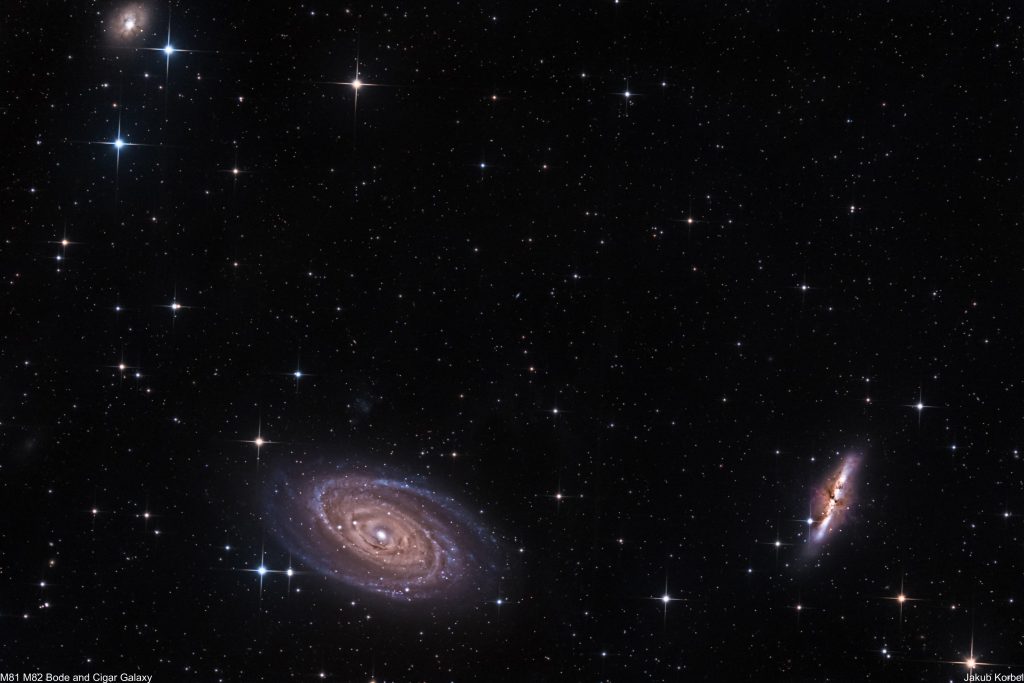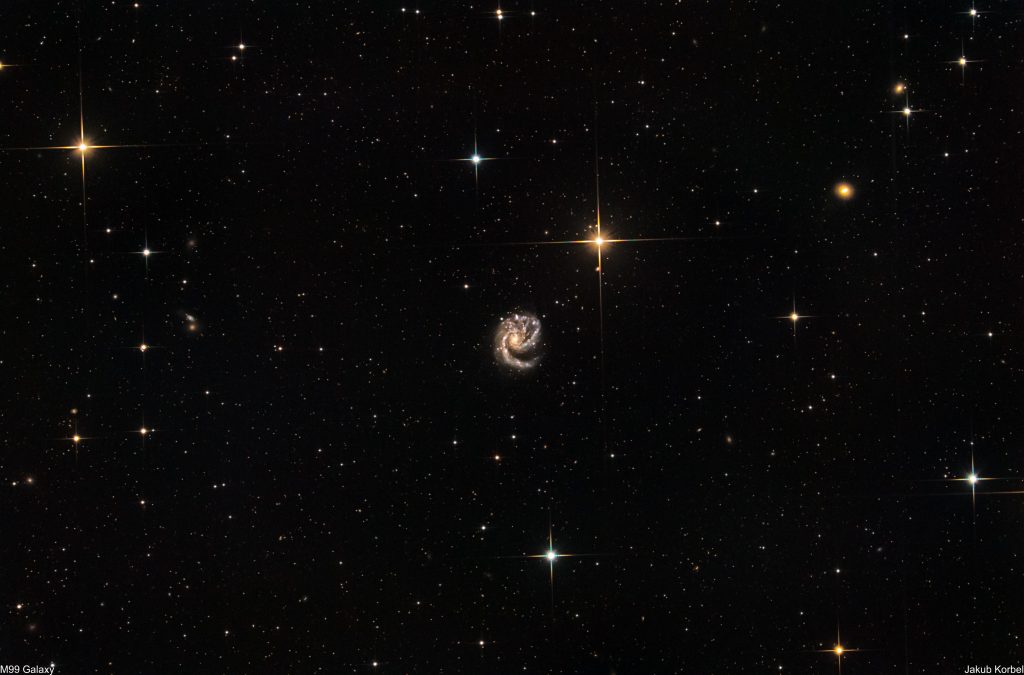After 6 fruitful years with my 10” Newtonian, I started to think about an upgrade. However, I concluded that there is simply no better, reasonably priced telescope, which I can still carry. Ritchey-Chrétien telescopes are better from an optical design point of view, but they are slow F8 and with the best reducer one can speed up the scope to F6, which is still more than one f-stop slower compared to F4 Newtonian. Refractors are slow and the aperture is small compared to any Newtonian. Officina Stellare makes a very nice and fast telescope, but unfortunately out of my budget.
There is simply no other option than to keep using my Newtonian. Instead of a complete change of the telescope, I decided to upgrade the Newtonian. I noticed that the brighter stars have an ugly reflection, especially if the dual-band filter is used. The reflections can be caused by many reasons, for instance:
- Internal reflections
- Primary mirror holder
- Filters
The first issue can be solved by flocking the secondary mirror, but mine is already black on the sides. Another source could be the internal surface of the tube. The simple solution is just to attach some black velour material inside. Nowadays one can get peel and stick sheets for example FLO offers a 5-meter long roll, which is nicely advertised: “Blacker than the blackest black stuff”. I had to completely disassemble the Newtonian and started to place the velour inside:
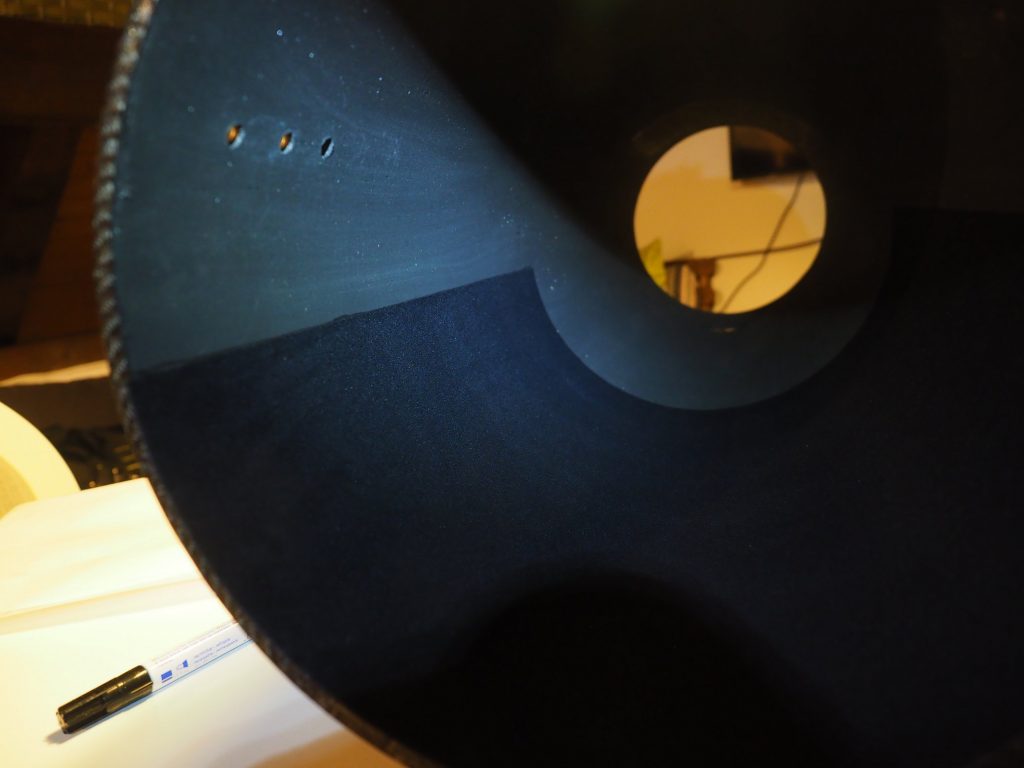
You can see how darker it gets inside even if you illuminate inside by the LED flashlight. Then, I continued and covered the whole internal surface. It was a straightforward and inexpensive upgrade.
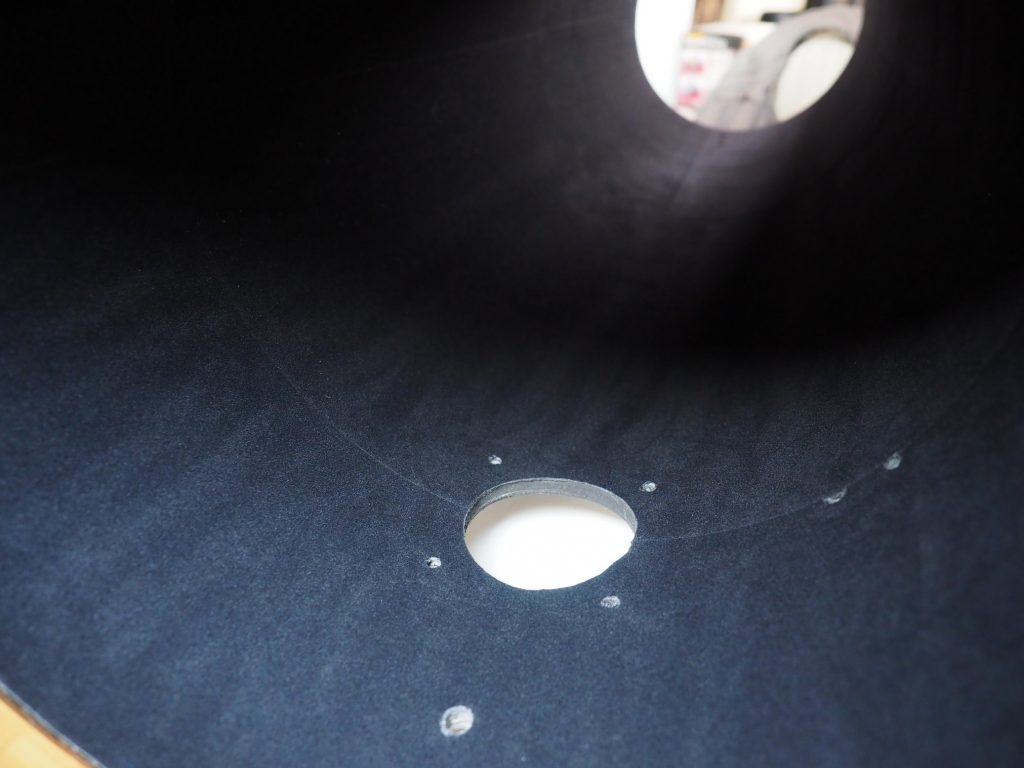
The second upgrade was also straightforward, but more expensive – the primary mirror. I think this is the root cause of the ugly reflections/halos around the brighter stars. The problem is well described on the internet (e.g. cloudy nights) and it’s caused by the three clamps, holding the mirror. Inexpensive would be to use an aperture mask and simply cover these clamps (like suggested on cloudy nights). However, this reduces the aperture and ability to collect as much light as possible. I decided to choose another path. I noticed that Teleskop-express offers Quartz primary mirrors with thread M50 on the backside of the mirror. This is exactly what I need – a new method of clamping. I ordered the mirror with the mirror cell because the old one cannot be used. Well, I thought that this will solve all my problems with the reflections, but a surprise popped up during the unboxing. The mirror had finger imprints, but this would be the smallest problem. The main problems are the uncoated marks on the edges:
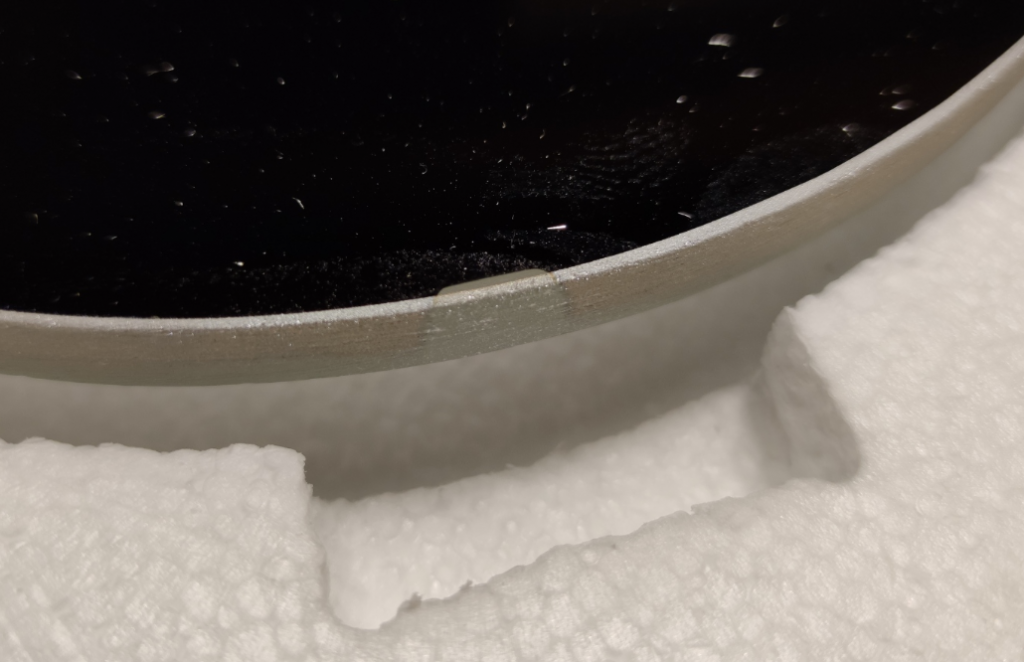
I immediately contacted Teleskop-express for an explanation. I was told that these uncoated marks have all Quartz mirrors and they are caused by the clamping during coating in a vacuum chamber and it is not a quality issue. They also claim that it should have no influence on the quality of the astrophotos. Well, we will see about that.
The uncoated regions are roughly 2 mm wide and 12 mm long. I assumed that the external edge is perfectly round and if I would know that the mirror has these defects, I would not order it. I use CatsEye collimation tools, which is a very precise method, but it requires attaching a self-adhesive triangle on the primary mirror. It’s quite a straightforward procedure. I tried to be as precise as possible and when I attached the triangle, I noticed that the original circle denoting the center of the mirror is roughly 2 mm off. Here is the picture from distance:
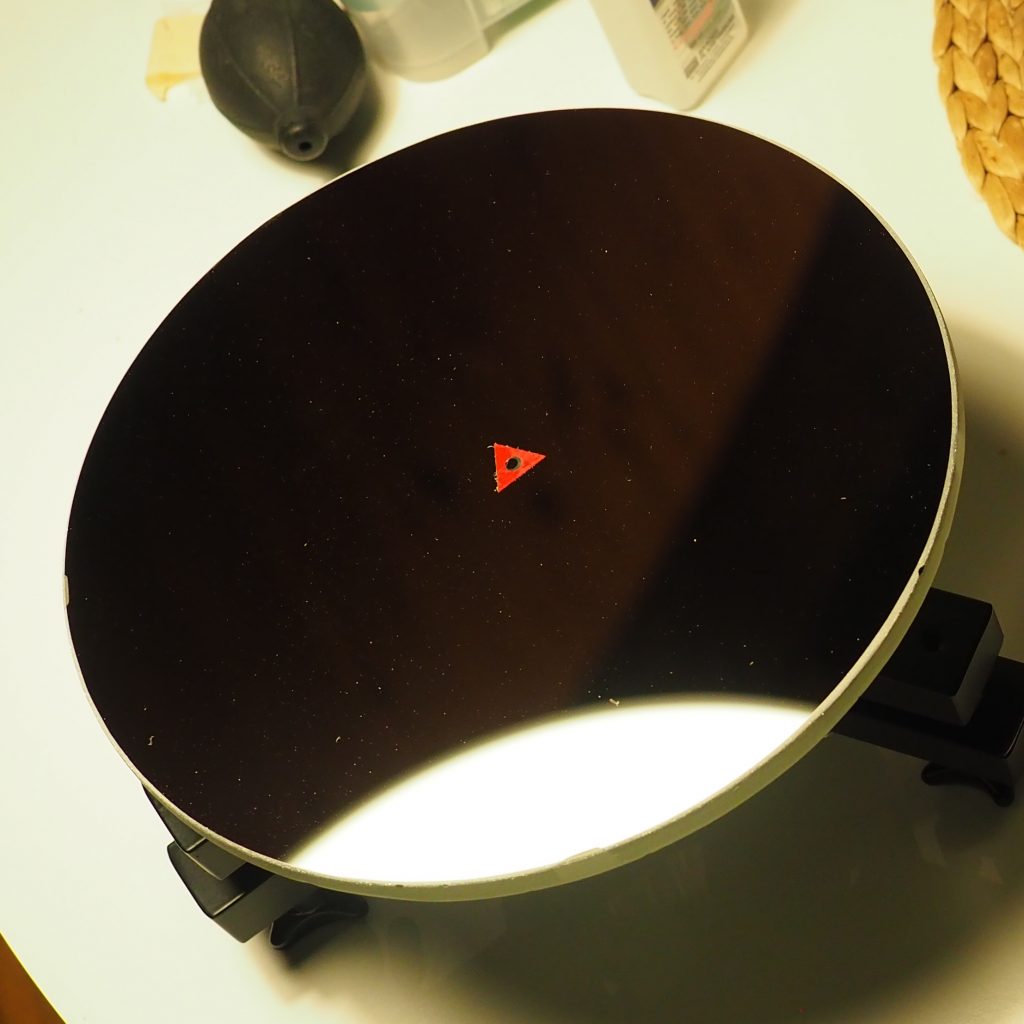
And here is the comparison – the new mirror (left) vs. the old mirror (right):
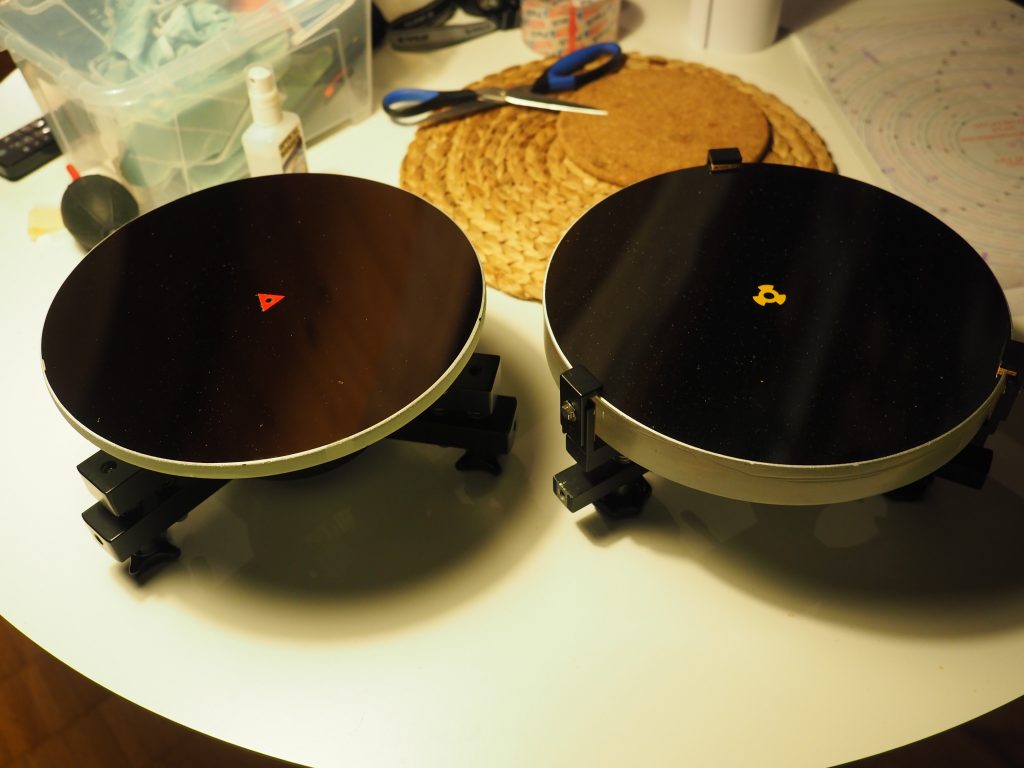
I had an opportunity to recapture the M99 galaxy this year. In the field of view, there is the HIP 60089 star with a magnitude of 6.5. The left picture was captured with the old primary mirror and the right one with the new Quartz primary mirror. Obviously, the new one has fewer reflections and three dark shadows in the shape of the radioactive symbol vanished. However, there are still some shadows in the halo around the star. Please note that I didn’t use any filter in the optical train, only the MaxField coma corrector. So the filter can be excluded as a root cause of this problem. There are two uncoated regions on the mirror, approximately 45° from each other, which corresponds well with the shadows. On the other hand, there is another star in the field of view, in the upper left corner. This star has a magnitude of 8.95. This one looks significantly better and definitely more circular.
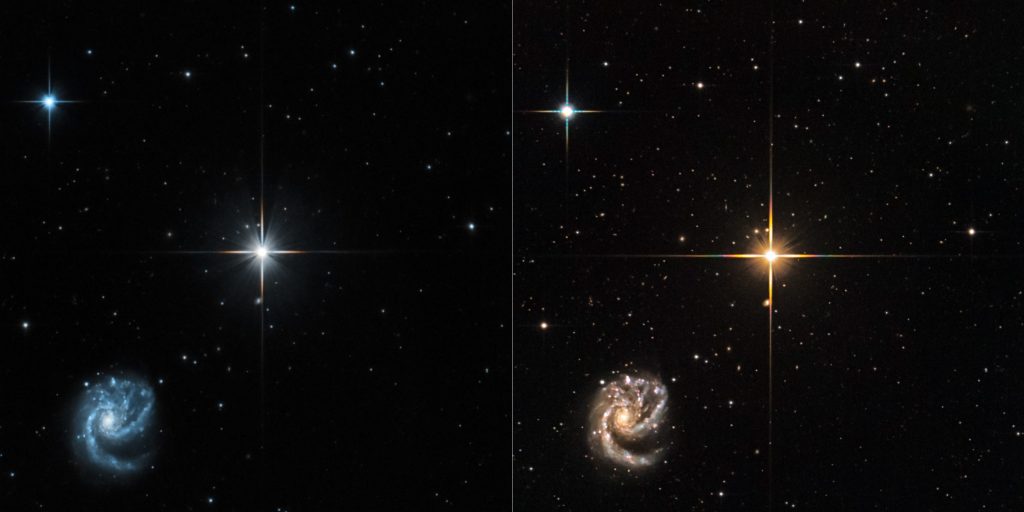
Conclusions:
Well, I have mixed feelings about the upgrade of my Newtonian. It was easy and inexpensive to attach the velour material inside the tube. The change of the mirror and its fixation was also simple, but quite expensive and it didn’t solve the problem fully. It only reduced the reflection around the +6 magnitude starts, but there are still some reflections, most probably caused by uncoated regions on the edge of the mirror. If you already have a Newtonian and if you are considering purchasing TS-Optics Quartz Newtonian Primary Mirror, probably the aperture mask would be a more effective and significantly cheaper solution.

